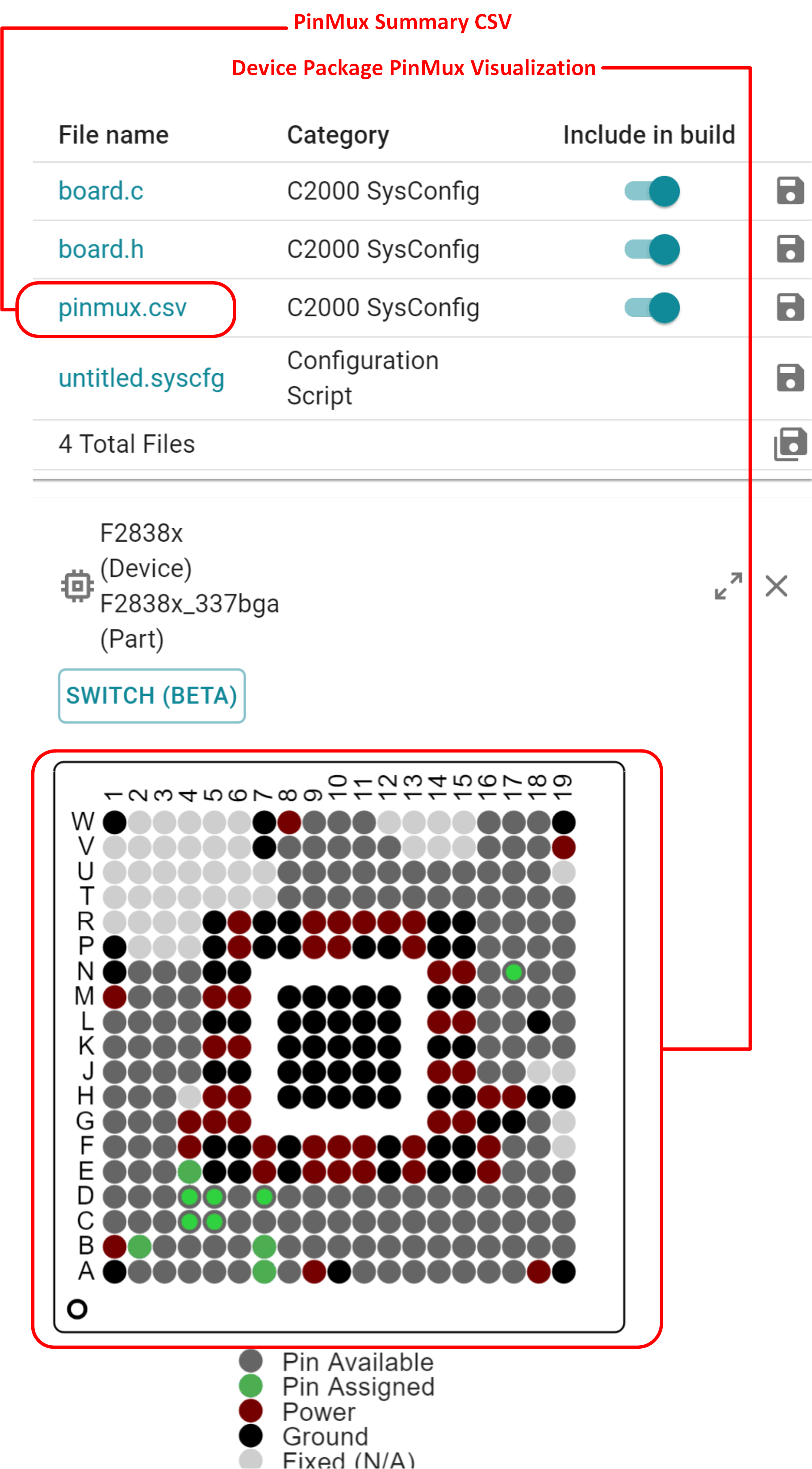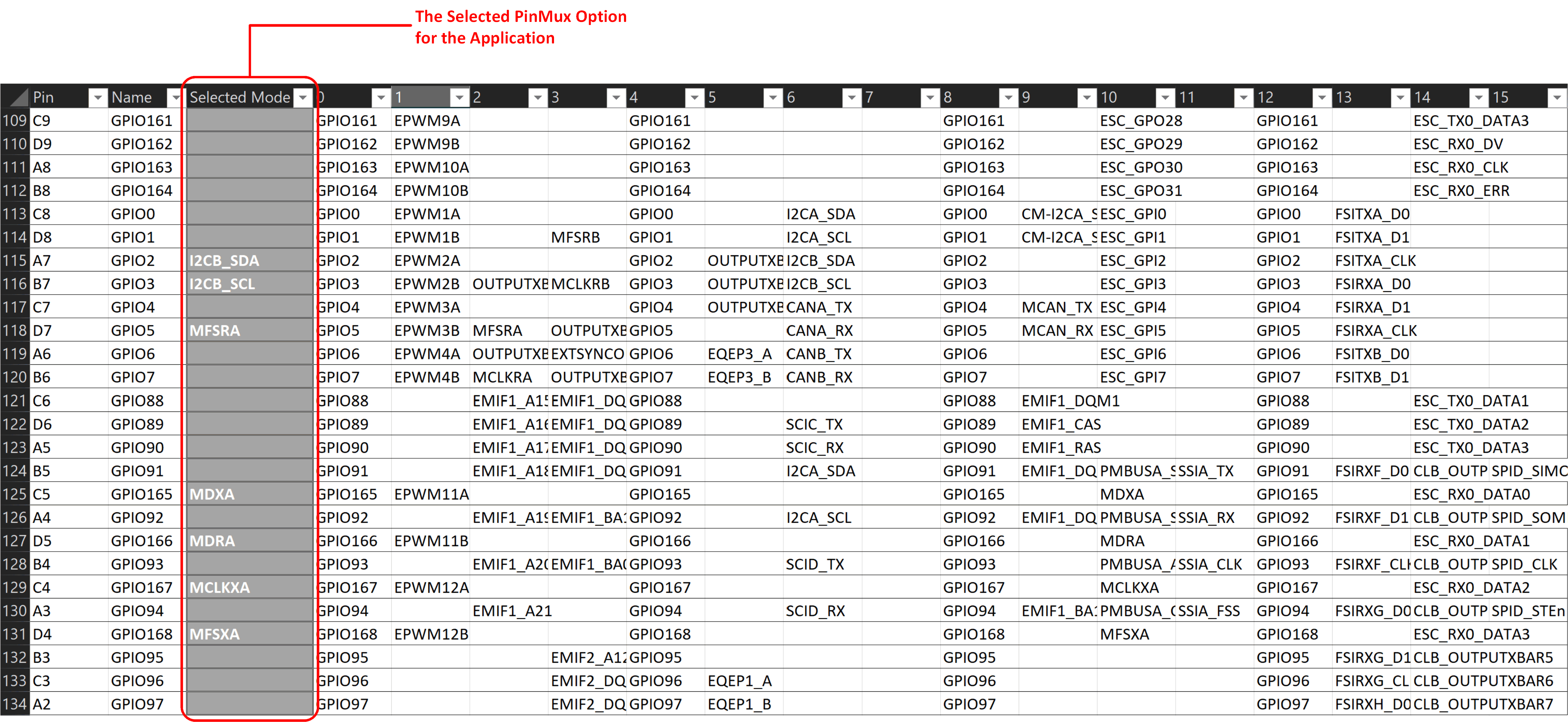SPRACX3 October 2021 F29H850TU , F29H859TU-Q1 , TMS320F2800132 , TMS320F2800133 , TMS320F2800135 , TMS320F2800137 , TMS320F2800152-Q1 , TMS320F2800153-Q1 , TMS320F2800154-Q1 , TMS320F2800155 , TMS320F2800155-Q1 , TMS320F2800156-Q1 , TMS320F2800157 , TMS320F2800157-Q1 , TMS320F280021 , TMS320F280021-Q1 , TMS320F280023 , TMS320F280023-Q1 , TMS320F280023C , TMS320F280025 , TMS320F280025-Q1 , TMS320F280025C , TMS320F280025C-Q1 , TMS320F280033 , TMS320F280034 , TMS320F280034-Q1 , TMS320F280036-Q1 , TMS320F280036C-Q1 , TMS320F280037 , TMS320F280037-Q1 , TMS320F280037C , TMS320F280037C-Q1 , TMS320F280038-Q1 , TMS320F280038C-Q1 , TMS320F280039 , TMS320F280039-Q1 , TMS320F280039C , TMS320F280039C-Q1 , TMS320F280040-Q1 , TMS320F280040C-Q1 , TMS320F280041 , TMS320F280041-Q1 , TMS320F280041C , TMS320F280041C-Q1 , TMS320F280045 , TMS320F280048-Q1 , TMS320F280048C-Q1 , TMS320F280049 , TMS320F280049-Q1 , TMS320F280049C , TMS320F280049C-Q1 , TMS320F28075 , TMS320F28075-Q1 , TMS320F28076 , TMS320F28374D , TMS320F28374S , TMS320F28375D , TMS320F28375S , TMS320F28375S-Q1 , TMS320F28376D , TMS320F28376S , TMS320F28377D , TMS320F28377D-EP , TMS320F28377D-Q1 , TMS320F28377S , TMS320F28377S-Q1 , TMS320F28378D , TMS320F28378S , TMS320F28379D , TMS320F28379D-Q1 , TMS320F28379S , TMS320F28384D , TMS320F28384D-Q1 , TMS320F28384S , TMS320F28384S-Q1 , TMS320F28386D , TMS320F28386D-Q1 , TMS320F28386S , TMS320F28386S-Q1 , TMS320F28388D , TMS320F28388S , TMS320F28P550SG , TMS320F28P550SJ , TMS320F28P559SJ-Q1 , TMS320F28P650DH , TMS320F28P650DK , TMS320F28P650SH , TMS320F28P650SK , TMS320F28P659DH-Q1 , TMS320F28P659DK-Q1 , TMS320F28P659SH-Q1
- Trademarks
- 1 Introduction
- 2 Getting Started With C2000 SysConfig
- 3 C2000 SysConfig Overview
- 4 SysConfig Generated Files After the Project is Built
- 5 Application Code Based on C2000 SysConfig Initialization
- 6 Interrupt Support
- 7 Device-Specific Code Generation
- 8 Adding C2000 SysConfig Support to Existing Projects
- 9 Remove C2000 SysConfig Support from Projects
- 10Standalone SysConfig Tool
- 11Summary
- 12References
3.2 PinMux
For each peripheral with PinMux options, there is a PinMux submodule available in the Configurable Options panel. Inside the PinMux submodule, there are configurable options for each pin of the peripheral along with the instance of the peripheral. The solution for the PinMux is shown as the selected option for each pin. You can LOCK the solution to ensure it does not change as more modules/peripherals are added.
Above the PinMux submodule, a configurable option named Use Case is also available to limit the available peripheral pins in the PinMux module. Selecting the Custom option for the Use Case adds a new configurable option named Pins Used, where you can select the peripheral pins for their specific custom use-case.
It is also possible to modify the PinMux submodule GUI to show not only the device pin names, but also the device GPIO number. To change the pin name representation:
- Click the three dots at the top right corner of the C2000 SysConfig GUI
- Select Preferences and Actions
- In the Device Pin Labels options, select the Device Pin Name option
The device PinMux summary is available inside the pinmux.csv auto-generated file.
 Figure 3-8 PinMux Summary CSV Auto-Generated
File
Figure 3-8 PinMux Summary CSV Auto-Generated
FileThe pinmux.csv file contains not only the selected PinMux options, but it also contains ALL AVAILABLE PinMux options for each pin.
 Figure 3-9 pinmux.csv Auto-Generated
File
Figure 3-9 pinmux.csv Auto-Generated
File